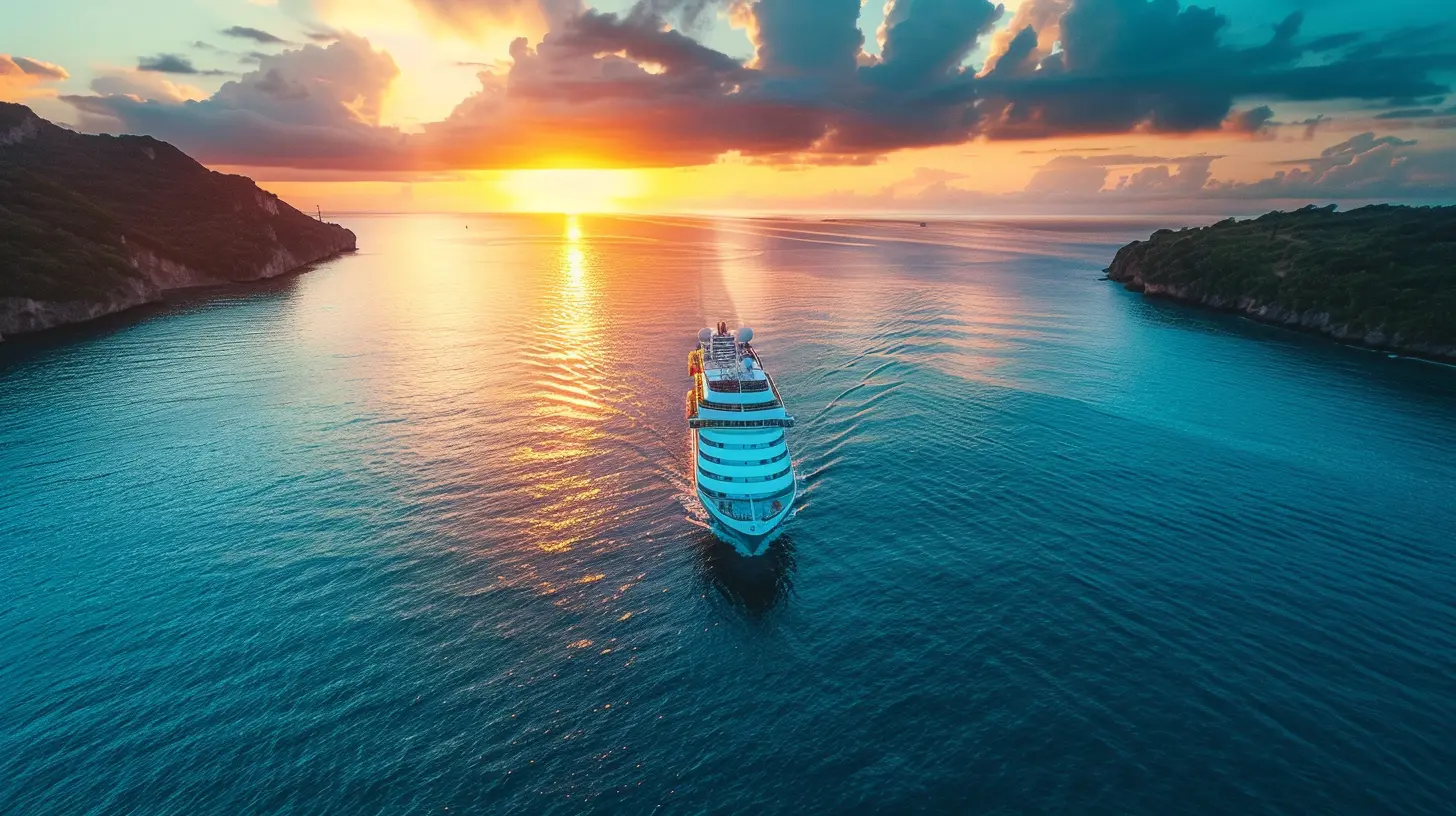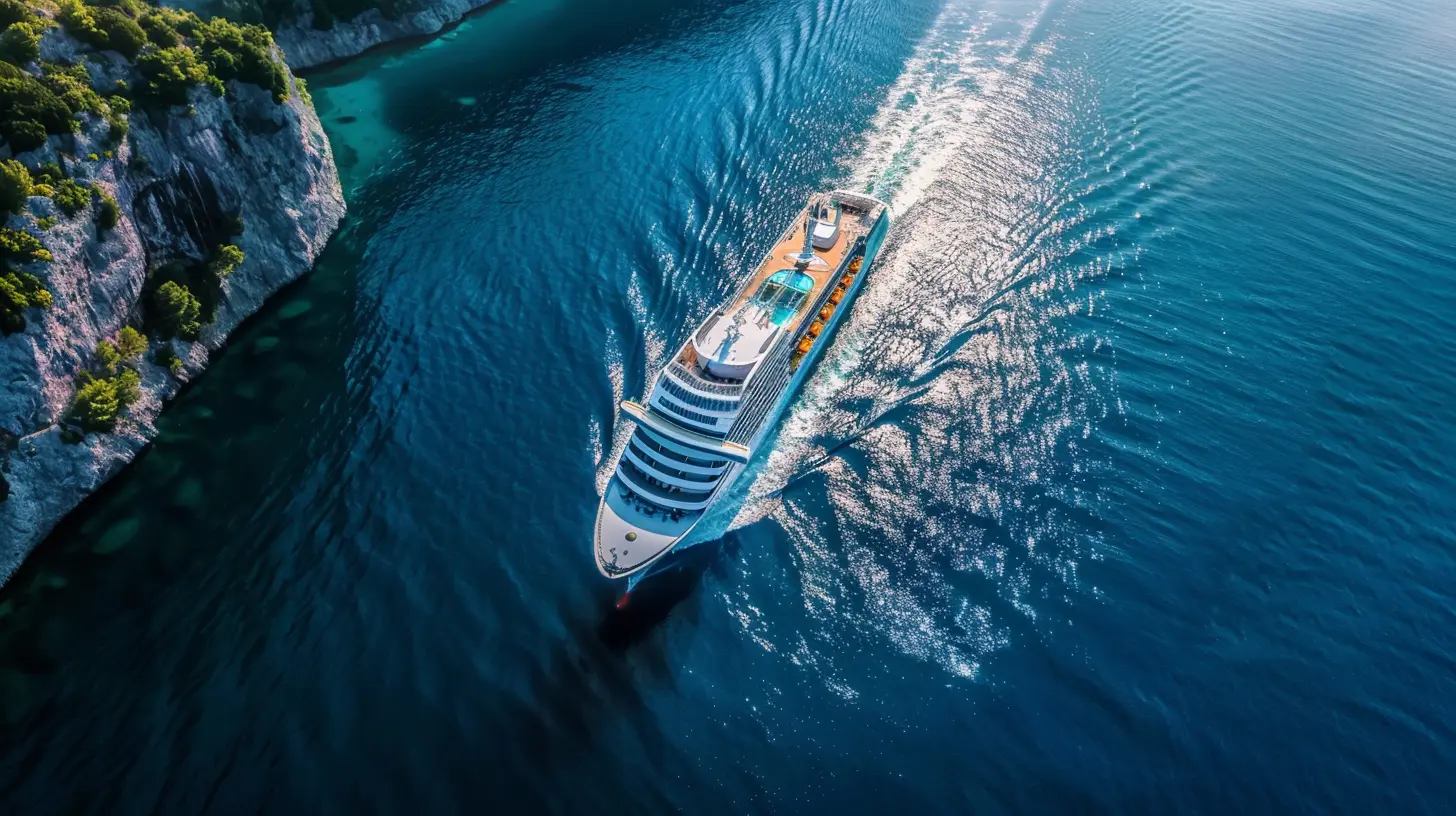Sustainable Cruising: How to Minimize Your Environmental Impact on the Water
11 July 2025
Cruising is a dream vacation for many, offering a mix of relaxation, adventure, and breathtaking ocean views. But have you ever stopped to consider the environmental impact of these floating cities? From fuel consumption to waste production, cruise ships have traditionally had a massive carbon footprint.
The good news? Sustainable cruising is on the rise, and as travelers, we can take steps to minimize our impact on the water. Whether you're planning your first cruise or you're a seasoned sailor, there are plenty of ways to ensure your trip is as eco-friendly as possible. Let’s dive in!

The Environmental Impact of Cruising
Before we get into solutions, it's important to understand the problem. Cruise ships are essentially small cities, and like any city, they generate waste, consume energy, and contribute to pollution. Here are a few key concerns:- Carbon Emissions – Cruise ships run on fossil fuels, contributing to greenhouse gas emissions and climate change. A single ship can emit as much pollution as thousands of cars.
- Waste Generation – From food waste to plastic bottles, the amount of trash produced on a cruise is staggering. In some cases, waste ends up in the ocean.
- Water Pollution – Cruise ships release wastewater, sewage, and even hazardous chemicals into the ocean, which can harm marine ecosystems.
- Overtourism – Popular ports sometimes struggle with the influx of thousands of passengers at once, straining local resources and disrupting ecosystems.
So, what can we do? The good news is that sustainable cruising is becoming more popular, and with a few mindful choices, you can enjoy your vacation without harming the planet.

How to Choose an Eco-Friendly Cruise Line
If you love cruising, the best place to start is by choosing a company that prioritizes sustainability. Some cruise lines are making big moves to reduce their environmental impact, while others lag behind. Here’s what to look for:1. Eco-Friendly Ship Design
The latest cruise ships are being built with sustainability in mind. Look for companies investing in:- LNG (Liquefied Natural Gas) fuel – A cleaner alternative to traditional ship fuel.
- Advanced wastewater treatment systems – Ensuring no untreated sewage ends up in the oceans.
- Energy-efficient technology – LED lighting, solar panels, and hybrid propulsion systems help reduce emissions.
2. Waste Management Practices
Some cruise lines have committed to reducing or eliminating single-use plastics, recycling their waste, and even composting food scraps. Brands like Hurtigruten, Ponant, and Lindblad Expeditions are leading the way with zero-waste initiatives.3. Smaller, More Sustainable Ships
Large mega-ships carry thousands of passengers, increasing their environmental impact. Smaller, eco-friendly ships are often better choices because they:- Consume less fuel
- Generate less waste
- Put less pressure on small ports and fragile ecosystems
4. Commitment to Carbon Offsetting
Some cruise lines invest in carbon offset programs that fund renewable energy and reforestation projects to balance their emissions. This isn’t a perfect solution, but it’s a step in the right direction.
Sustainable Cruising Tips for Passengers
Even if you’re not the one sailing the ship, your daily choices onboard can make a big difference. Here’s how to cruise sustainably as a passenger:1. Bring Reusable Essentials
Single-use plastics are everywhere on cruise ships. You can cut down on waste by packing:✔️ A reusable water bottle
✔️ A stainless steel straw
✔️ Reusable shopping bags
✔️ A travel coffee mug
Many cruise lines now have water refill stations, so there’s no need to buy bottled water.
2. Say No to Buffets (or at Least Be Mindful)
Cruise buffets are convenient but incredibly wasteful. Tons of uneaten food goes to waste every day. Here’s how to help:- Take only what you can eat
- Choose plated meals when available
- Support cruise lines with food waste reduction programs
3. Reduce Energy and Water Usage
Ships rely on generators for power, so conserving energy is key. Small habits add up:- Turn off lights and electronics when leaving your cabin
- Limit your shower time
- Reuse towels instead of getting fresh ones daily
4. Choose Sustainable Excursions
Many cruise excursions contribute to environmental harm, from overcrowding nature reserves to disturbing wildlife. Instead, opt for eco-friendly alternatives:- Nature tours led by certified guides
- Visits to marine conservation projects
- Responsible wildlife encounters (avoid dolphin swims or elephant rides)
Bonus points: Look for local tour operators that give back to their communities!
5. Be Mindful of Marine Life
Nothing is worse than seeing trash floating in the ocean. Help protect marine life by:✔️ Never throwing anything overboard
✔️ Using reef-safe sunscreen to avoid damaging coral reefs
✔️ Keeping a safe distance from wildlife (no chasing dolphins or touching sea turtles!)
6. Offset Your Carbon Footprint
Even the greenest cruise ships emit carbon, but you can help by offsetting your own footprint. Websites like Carbonfund.org allow you to calculate your emissions and invest in environmental projects.
Supporting Destinations in a Responsible Way
Cruise tourism can be a double-edged sword—while it brings economic benefits to port cities, it can also overwhelm local cultures and environments. Here’s how to be a responsible traveler:1. Respect Local Communities
When you disembark, remember that locals live there year-round. Be respectful by:- Supporting local businesses instead of big cruise-owned shops
- Dressing modestly in conservative cultures
- Learning a few basic phrases in the local language
2. Avoid Overtouristed Spots
Some destinations suffer from overcrowding due to cruise tourism (think Santorini or Venice). Instead of flocking to the busiest spots, consider visiting lesser-known gems where your presence has a positive impact.3. Leave No Trace
What applies to hiking also applies to city visits—leave places as you found them (or better). Dispose of trash properly, don’t take "souvenirs" like shells or sand, and respect wildlife.The Future of Sustainable Cruising
The cruise industry still has a long way to go, but things are improving. Some promising signs include:- New zero-emission ships powered by renewable energy
- Bans on heavy fuel oil in certain regions
- Stricter regulations on waste disposal
- More sustainable tourism initiatives focused on protecting fragile ecosystems
As travelers, our choices matter. If we demand greener cruising options and act responsibly, the industry will continue to evolve. So, next time you book a cruise, do your research, pack your reusable gear, and sail with the environment in mind.
After all, the beauty of the ocean is what draws us to cruising in the first place—shouldn’t we do everything we can to protect it?
all images in this post were generated using AI tools
Category:
Cruise TravelAuthor:

Claire Franklin
Discussion
rate this article
2 comments
Drake Anderson
Great insights! Thank you for sharing this.
October 6, 2025 at 2:43 PM

Claire Franklin
Thank you for your kind words! I'm glad you found the insights helpful.
Nathan McConkey
This article offers valuable insights for eco-conscious travelers looking to enjoy cruising while minimizing their environmental footprint. By adopting sustainable practices, we can enhance our experiences and protect our oceans for future generations. Great read!
July 20, 2025 at 2:45 PM

Claire Franklin
Thank you for your kind words! I'm glad you found the insights valuable for eco-conscious cruising. Together, we can make a positive impact on our oceans!


